Creating epic images while visiting the beach is often one of the top priorities for photographers of all ability levels who have some time to spend at the shore. Surfing is an absolutely incredible visual opportunity for photographers of all ability levels to test their skill. Photographing surfers in action presents a number of challenges from a technical standpoint. The tips and information in this article are a combination of my own experience and study, along with valuable contributions from Cody Leutgens, a champion surfer and surf-school owner from Surf City, North Carolina. And Nate Adams, the photo editor for Eastern Surf Magazine.
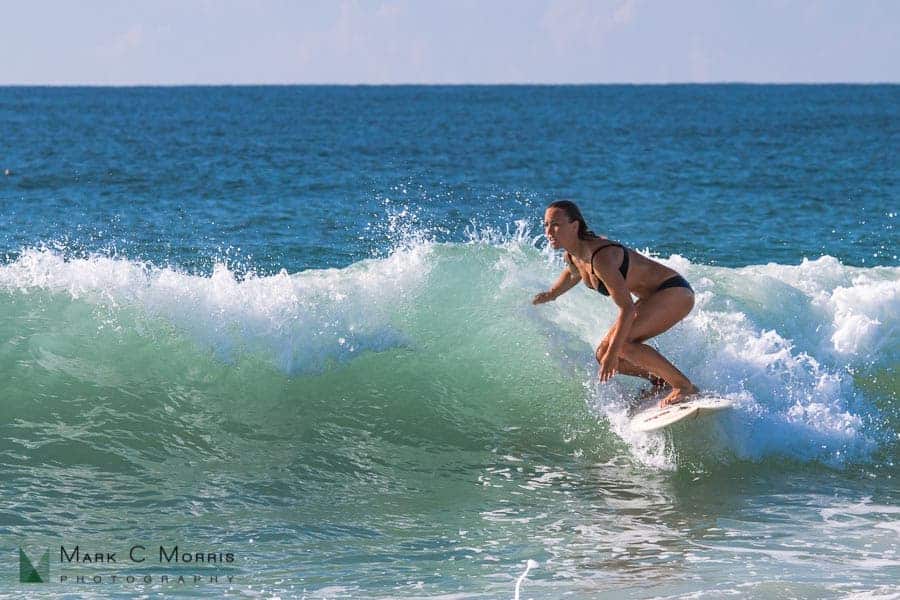
12 Photography Tips
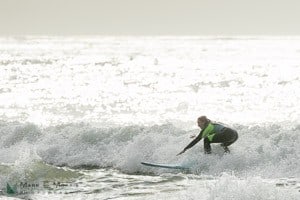
1. Study the light before you start shooting.
Hopefully as photographers, we are all fairly obsessed with the study of light, and how it is interacting with our subject(s). Surf photography very frequently includes a tremendous amount of light for the photographer to work with. Before you start shooting, examine how the light is hitting the water. Look straight in front of you, and with a very critical eye, look at the way the light is bouncing off of the waves, and off of the surface of the water. Now, look each direction and depending on the time of day, and your specific location, you will see that in one direction, there may be a LOT of reflection on the water. In the opposite direction, you will see far less, or perhaps zero reflection. If you are hoping to get good quality photos of the individual that is surfing, you want to shoot on an angle off the beach, in the direction where there is no reflection. The other important aspect of light is the quality of water/waves that you have, and the way that the sun is shining on or through the water. The water in surf photography is often an incredible part of the photo.
2. Use a lens with a lot of ‘reach'
Having the right tool for the job makes a tremendous difference. In this particular case, you will find that a lens with a focal length of 300 mm or 400 mm will make a HUGE difference. I am a canon shooter. During my first year of surf photography, I was using a Canon 100-400mm version 1. When it came time to purchase a surf lens of my own, I selected the Canon 100-400mm version 2. The version two of that lens is VASTLY sharper, faster and more enjoyable to shoot with. True, it's an extra $700 or so, and that's a decent chunk of change; but given my interest in surf photography as well as wildlife/bird photography, I felt that it was a very good allocation of funds.
3. Err on the high side for shutter speed
In general, surfing is both extremely dynamic, and very fast-paced. I highly recommend shooting in manual mode, so that you can have complete control over what your camera is capturing. The most impressive images tend to be the ones that truly stop the action. The water spray from a surfboard, or the facial expression on a surfer will be much more impressive if they are tack sharp. Of course with any ‘absolute' statement there are exceptions. But unless you are intentionally trying to get a blurred effect for motion, or unless you have some other artistic intention driving a slower shutter speed, I would recommend trying to stay at 1/640 or above. The clarity of the water spray, and the tack sharp image of someone in a great surfing posture will make exceptional photographs.
4. Try to keep your aperture “middle of the road”
There is usually TONS of light when shooting on the beach. When shooting a surfer, you are generally trying to capture a super-sharp, detailed image. It's a very good idea to do a bit of research and find out exactly where your lens is going to give you the best sharpness. The better your lens, the less of an impact this may have, but it's always a great idea to aim for a mid-range aperture setting if the lighting scenario permits. The benefit to a mid-range aperture is that you will have a bit more flexibility in your depth of field. If you shoot with the aperture wide open, your depth of field will be very narrow, and it's easy for the surfer to glide out of focus.
5. Keep ISO as low as possible
For most photographers this statement is true ALL the time. The lower your ISO, the less noise you will have to deal with in your image. Since beach/surfing photography is generally going to have tons of available light, you should be able to keep your ISO at the very lowest setting.
6. Consider a circular polarizing filter
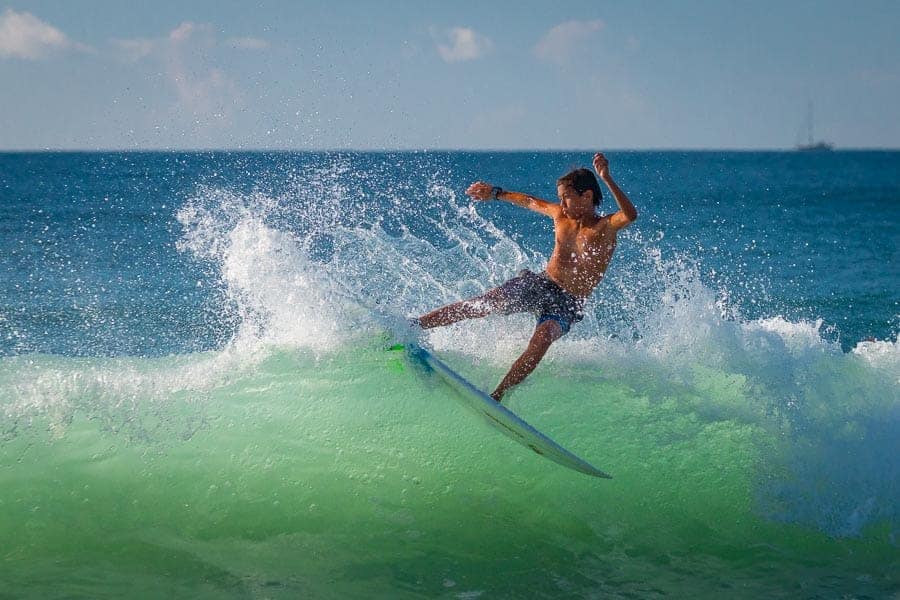
A circular polarizing filter is an incredibly helpful tool anytime you are shooting around reflective surfaces. As I mentioned in the very first suggestion, light and water = REFLECTIONS. If it's an overcast day, I tend not to use my circular polarizing filter. The reason is two-fold: 1) If it's overcast, there aren't as many reflections and 2) The polarizing filter absorbs a decent amount of your available light. But, if you have a really bright, clear day, and the sun is creating a lot of reflections, the polarizing filter can give you some absolutely amazing results. Using the clouds/sky as a test subject for adjusting the polarizer can be very interesting, too. This is a wonderful tool to have in your camera bag, and if you don't already have one, I would highly recommend getting one! Here is a link to a 77mm version (one for the Canon 100-400mm lens mentioned above). Just be certain to get one that is the correct size for the lens you will be using.
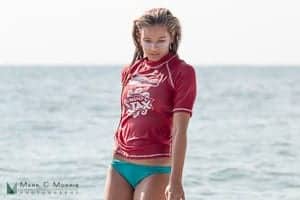
7. Remember to expose for the skin
Here is a very challenging topic. Bright sun can cause some very harsh shadows. You don't have the option of a modifier to fill in those shadows, either. As a surf photographer, you will need to struggle with finding a great exposure setting. The conventional wisdom is that you want to expose correctly for the skin. I tend to use spot metering for my surf photography, because evaluative metering often takes the bright sky and waves into account, and I end up skewing my exposure setting to those bright parts of the image, and the human subject ends up very under-exposed. If you expose for the skin, the waves and background may approach being “blown out.” Another great case for using full manual mode – you can control exactly what is happening with your camera. That is not to say that every image will be exactly perfect. Quite the opposite! But you will get more and more control over time. Unless you are intentionally trying to get a silhouetted subject, you should expose for the skin and make the human look “right,” then adjust your other elements in post-production.
8. Keep the horizon level
If you are shooting in a direction that will result in the horizon line being in your shot, be very aware of the horizontal line in the frame of your image. Sometimes photographers like to toy with that line in order to create a “funky” or “artistic” view of things. A non-level horizon line should be both a deliberate choice, and a very seldom used one. It is generally going to look ‘odd' to have the horizon askew. As with any “rule” or “suggestion” dealing with the subjective opinion of art, there will be exceptions. But at the very least, be mindful of the horizon, and be respectful of the powerful aesthetic impact that is made (for good or bad), when that horizon line is not level.
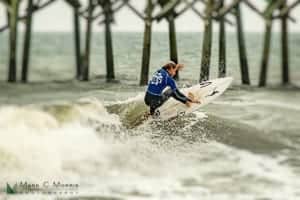 9. Rules of composition still apply
9. Rules of composition still apply
One of the mistakes I was very guilty of when first shooting surf photography is to lose myself in the dynamic images that I was creating. Surf photos have an incredible potential to look just great. But there needs to be more deliberate effort and thought if you want to elevate from “good to great” as they say. The composition of a surf photograph needs to balance the obvious focus and interest on the subject of the photo, along with the beautiful landscape of the surrounding waves, piers, rocks, other people, etc. We would very easily recognize a distracting element in a portrait. The same is true in a surf photo! If you have a surfer that has an unintended sailboat mast coming out of their ribs, there is distraction. Other traditional rules of composition will definitely still apply. Take the rule of thirds into consideration. Be fully aware of the tension that is created when objects are positioned awkwardly or too closely to the edge of your image.
 10. Post-processing hints/tricks
10. Post-processing hints/tricks
Your post processing choices are always a key element to the quality of image that you create. Out of camera images are not “ready for prime time.” As you prepare your image, be very mindful of what it takes to make skin look good, versus what it takes to make water and surrounding landscape look good. You will most likely be spending a great deal of time using masks and brushes to apply your various work ONLY to the surfer, or ONLY to the background. Don't be afraid to experiment and learn new techniques to make a superb image. For example, if you happen to live far from the beach, and the opportunity to photograph a surfer is a rarity, you will need to work with the conditions on the day that you are photographing. If that day does not provide you with a compelling sky, as an artist, you may want to make some creative choices that involve swapping out a dull, overcast sky, with one that will give your image the “wow factor” that you are looking for. The main issue here is integrity and honesty. Don't try to pass off a photo with a sky replacement as a documentary photo. Are you curious about doing a sky replacement? Here is a GREAT tutorial on the subject!!
11. Location, Location, Location
Surfing and the photography of surfing vary tremendously depending upon where in the world you are taking photos. If you are on the North Shore of Hawaii with the enormous epic waves, that is a very different type of setting than photographing the ‘trash waves' on the east coast of the United States. Each and every location provides incredible opportunities for creativity and excellence, but there may need to be a bit more creativity and technical mastery in order to make a truly captivating surf image in some locations over others. Serious surf photographers, much like their surfing counterparts, will become serious travelers.

12. Tell a story
The truly compelling side of any great photograph is the story that it tells. Sometimes that story is of crazy beautiful tropical waves, or a perfectly executed complex maneuver. But sometimes, the truest moments of storytelling come from the most relaxed, natural, comfortable moments. Capturing images of people having the time of their life, at peace with their world and exalting in an activity that they truly love is perhaps the most profound gift that surf photography has to offer.
13. Practice!
Every artistic pursuit comes in unsteady bursts of learning. It is very easy to go from complete novice to amateur. It takes ever-increasing study and patience to climb the rungs in order to become a creator of truly inspirational surf images. With your study of surf photography will undoubtedly come a deeper knowledge of the sport, it's traditions, it's heritage, and the shared love that everyone within the activity shares for this cherished sport. There is something “zen” about surfing, but there is also something equally “zen” about capturing those fleeting moments that appear to defy gravity. The dynamic and exciting images that one captures while photographing surfers in action is incredibly addictive!
5 Tips from a Professional Photo Editor
After you have practiced and started producing some fantastic surf images, a natural ‘next step' would be to try to get your images published. Last summer I was fortunate enough to have some photos published in the online edition of Eastern Surf Magazine. I reached out to the photo editor, Nate Adams, and asked for a list of five things that in his professional opinion, make an image stand out as “epic” and thus worthy of publication. Here is his list!
Top 5 things that make a surf photo stand out as “epic” and in no specific order….
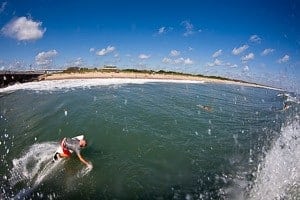
1. Lighting is crucial and the most important in my opinion and the basis of everything we see and how we see it, so how well you use it whether you're shooting in the early or late hours in the day to create something more than just tight and bright and this will separate your images right off the bat.
2. Composition and creating depth to the photo whether you're using some landmarks like piers/jetties, varying coastline, people on the beach, other surfers in the lineup and/or the weather with rad clouds cause it simply adds more to the image besides a blank horizon and although these aren't always available depending on where you are in the world, you have to find a balance between the subject and the elements you're given.
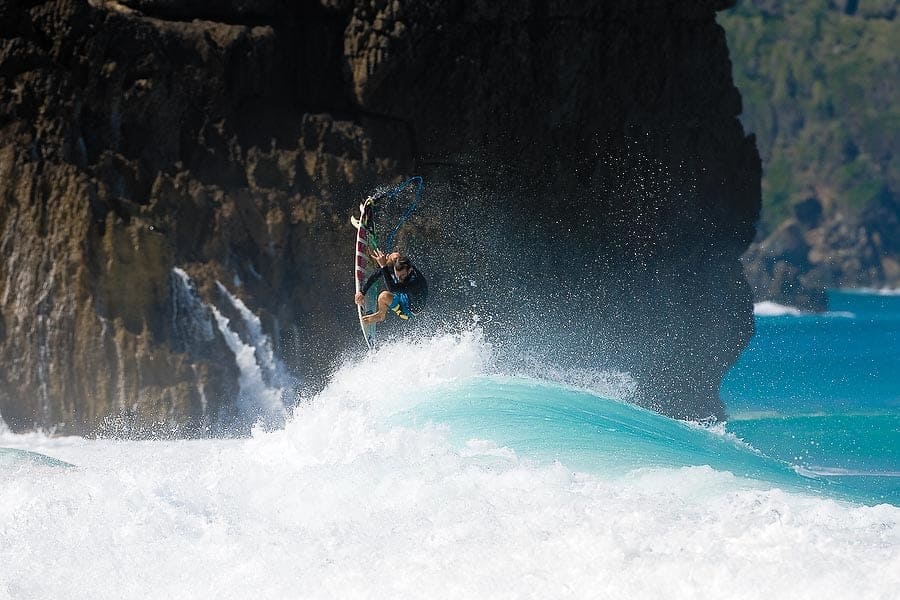
3. Quality of the image and not even so much having the best equipment on the market but rather how well you use what you have to create tack sharp images, so having the best glass is like having the best tires on your car even if it is a beater cause you can have a Ferrari with some bogus tires and it just isn't going to work as well as it can as if it had the best and on the opposite a beater car with the best tread to meet the road preforms better hands down.
4. The action itself since this is what you're documenting in the first place while applying the above four reasons and if it isn't at a “peak” moment of the action it won't have the same impact when you see it cause the whole idea is to create the feeling and emotion for the viewer to have that sensation of portraying themselves in that very spot shredding the bag out of a wave which I know we all do in the realm of mind surfing.

5. Thinking outside the box from what everyone else is shooting while having an objective to what you've envisioned or like to accomplish whether at your home break or traveling abroad cause creating a new perspective at a place like Pipeline or Chopes that has been documented a hundred times over isn't easy, so mixing it up and shooting from the water will also help achieve something the masses can't get from the shoreline, and will surely help in setting your images apart especially when everything comes together.
If you are interested in seeing more of Nate Adams' work, check out his website, www.OpticalTranquility.com, and of course you will find a ton of his material in Eastern Surf Magazine. You can also follow his Instagram page: @nathanadams
Thoughts from a Champion Surfer
Cody Leutgens is a former competitive surfer, and he is now one of the owners of Surf City Surf School. Full disclosure time – Cody is my wife's surf instructor, and he has become a great friend of ours. I can't say enough wonderful things about his expertise and breadth of knowledge in surfing. He has also worked extensively with a number of different photographers, and he has been a tremendous help to me as I have made a serious study of surf photography over the past two years. Anyone interested in discussing surfing on any level with an infectiously enthusiastic expert – I recommend reaching out to him.
Cody was kind enough to offer a third perspective on surf photography – directly from a knowledgeable surfer. One thing to be aware of as a fledgling surf photographer, is that images that look good from a photographic perspective may not portray the surfer in the light that they wish to have published. Having a knowledge of what surfers view as “good” surf photography is a tremendous help in getting your work noticed. Cody especially offers great words of wisdom for photographers in areas where the waves are not inherently amazing to look at. The waves off the east coast of the US are often not the type typically sought after by photographers and magazines, but a creative photographer can overcome these challenges.
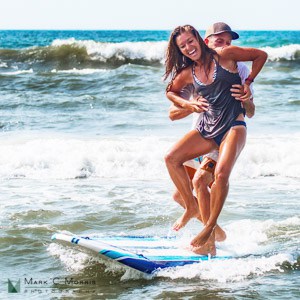 Background can be much more tough. Photographers are limited to piers, boats, occasional wildlife, other surfers and waves, and offshore weather/clouds. More of a luck aspect of a photo for our area, especially in the middle of the day.
Background can be much more tough. Photographers are limited to piers, boats, occasional wildlife, other surfers and waves, and offshore weather/clouds. More of a luck aspect of a photo for our area, especially in the middle of the day.
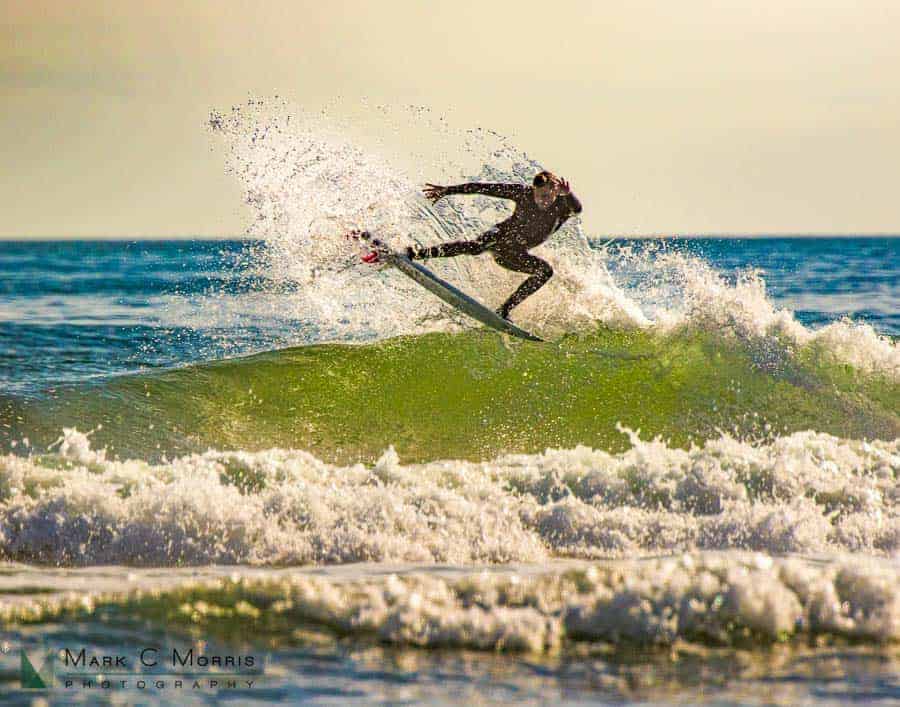
excellent article and advice. I had never shot any surfing or skim boarding until two summers ago when during our beach stay and walking down the beach we happened upon a Pro Skim boarding competition.. of course i ran back to the beach house and grabbed my camera (but only had my landscape gear since i had no idea about this or even planned to shoot something like this).. i learned a lot that first summer and captured this one (Jackson Tenney) with my walk-around 24-105 lens http://www.lawayne.photography/p982225293/h55172a5d#h31969425 and the following year i was prepared 🙂 and captured this one (of Ellen Wood – Pro, model released) with my 70-200/mkII lens http://www.lawayne.photography/p982225293/h55172a5d#h55172a5d. i hooked.. i LOVE photographing skimboarding and want to try shooting a surfing event sometime. Just wished i lived near the coast/beach.
Love both of these!!! Great captures!
Great article Mark! I will never be a surf photographer, but your advice will be helpful every couple years when I am at a surfing beach.
Thanks so much, glad you enjoyed it! Beach time is great time, indeed!!!
I live near the beach and often take photos of the surfers. Thanks for the great advice. I am sure it will help the next time I go there to take photos.
By the way, I am an amateur photographer.
Thanks Karen, I’m so glad you found something useful! Happy Shooting!!
I am an amateur surf photography based on Costa Rica learning how to take good photos. Thanks for the advice.
I am a “intermediate” photographer and belong to a photographic club. Our homework this month is Surfing, which I have never done before. I found your article very helpful and will be going down to the beach later this afternoon to see if I can put your advice into practice. Thank you for sharing your knowledge.
You this helped me refocus on the basics, because I started to get away from it. I really like the thoughts from a champion surfer. I was struggling to figure how to make my shots unique. I am doing more from the water with my housings which helped, but this overall really helped. I’d love for you take a look at my work.
http://www.mattpricephotography.net/
I was enjoying these helpful tips, until i read ‘trash waves’ on east coast, and it completely discredited you as a surf photographer. Just because we dont get the pretty boy waves of Hawaii, doesnt mean our waves our trash, we get some if the best waves in the US during hurricane season and our pipeline happens in the dead of winter in a 5mil, hard and heavy just how we like it on the east coast. Keep your pacsun shorts on lifes better in a 5mil.
This was extremely helpful! Thank you so much for sharing your insight. I just recently got into shooting and the home break I shoot at has an on the water pier that I shoot off of and for some reason the shots closer have light on the surfers, while the ones farther away have them as silhouettes. After reading the article- I think it may have to do with the angle of the shots and the light reflecting from the surfers. I’m going to try out some of your tips and hopefully the pictures come out better. You can check them out if you want and give me some pointers – but I’m nowhere near as good as everyone else who has commented.
Hi Mark. Tips for incredible surf photography is really good and interesting surf is exciting and fun activities, this is the best sport I ever enjoy. Balisurfinglesson.com